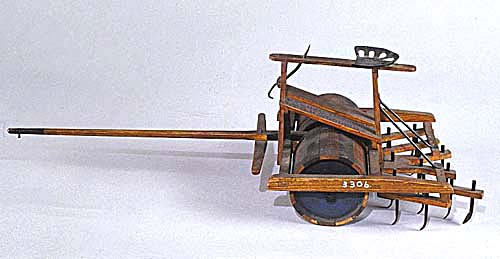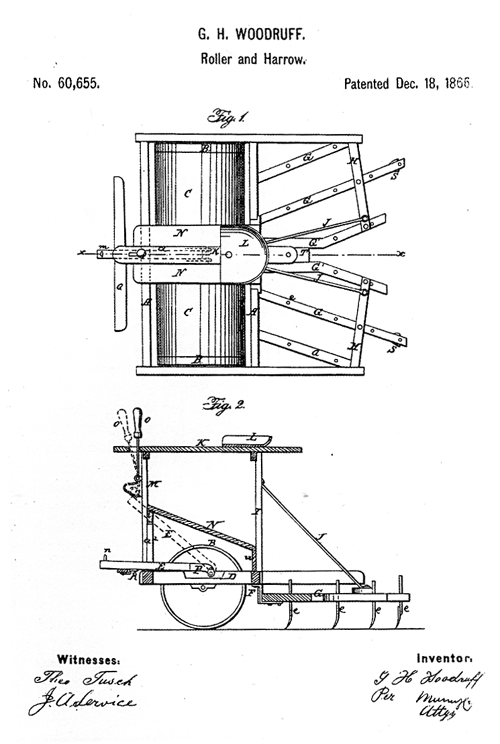Patent Models:
Improvement on Combined Roller and Harrow

In 1866 George Woodruff of Jerseyville, Jersey County, Illinois, applied for a patent (No. 60,655) specifically for five improvements he had devised for a combined roller and harrow. Woodruff was not in business; he just wanted others to have access to his improvements.
A harrow is a series of hooks that dig into soil between rows of crops to
remove weeds by covering them with dirt.
A roller breaks up clods of soil. The first rollers were logs and were awkward
to turn. To solve this problem, rollers were made in several sections. The
roller packs the soil, which allows moisture to escape. According to Davidson
and Chase (1908), following the roller with a smoothing harrow roughens the
surface, decreasing wind velocity, and applies a mulch of dust.
A sulky is a built-in seat that also provides a weight on the roller or harrow.

Study the detailed drawing of the invention.
The improvements were:
1) The employment of a pivoted lever, for the purpose of elevating the harrow
so that only the roller may be used.
2) The wheels in combination with the rollers and frame, constructed and arranged
in such manner that the rollers may be removed and only the wheels used, or
the wheels removed and the rollers moved out to the frame.
3) The beams standing obliquely to the frame, when the frame is provided with
wheels and rollers.
4) The adjustable seat in combination with the frame, wheels, and roller and
harrow, for the purpose of regulating the depth of the harrow teeth.
5) Attaching the pole or tongue by means of a bifurcated bar or straps, to
near the center crosspiece of the frame, in combination with the guide.







